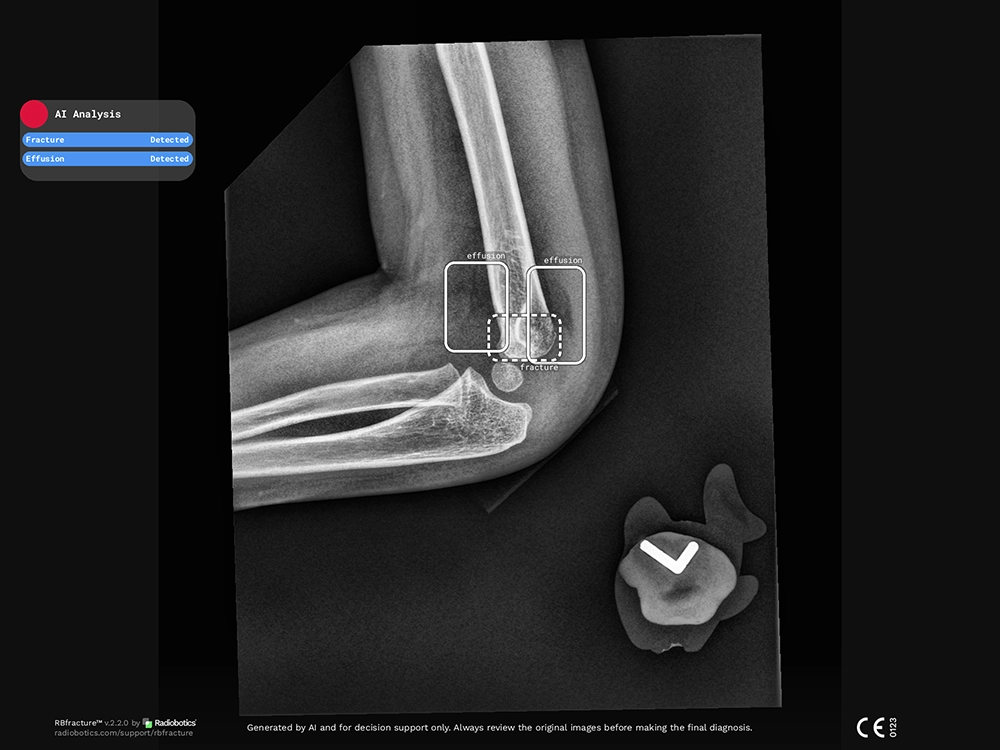Case study
Understanding elbow joint effusions and their significance in trauma detection: A case study on effusion identification with AI
About elbow effusions
Audit details
Results
Share this case study
Elbow joint effusions and their significance
What is an elbow joint effusion?
An elbow joint effusion occurs when excess fluid accumulates in the joint capsule. This often results from trauma, such as a radial head or olecranon fracture, or inflammatory conditions like septic arthritis or gout.
In paediatric cases, the posterior effusion can be an indirect sign of a non-dislocated and subtle supracondylar fracture.
Effusions are typically detected on lateral X-rays by observing the displacement of the fat pads surrounding the joint — a subtle sign that requires careful interpretation.

Why are elbow joint diffusions difficult to detect?
- Subtle imaging signs: The telltale “sail sign” or posterior fat pad displacement can be faint and easily missed by the human eye, especially in busy emergency departments.
- Variable patient presentations: Swelling and pain might not always correspond to visible effusions on X-rays, requiring radiologists to interpret small clues.
- ED pressures: Overcrowding and limited time per case can increase the risk of missed diagnoses.

Can an AI-powered solution like RBfracture™ that automatically detects trauma-related findings help detect elbow joint effusions?
See the results
Detecting effusions
Audit details
We conducted an internal audit of RBfracture to detect elbow joint effusions on an unseen test dataset of 297 eblow cases.
Radiographs were independently annotated by two qualified annotators who, supported by the original radiological report, analysed the radiographs and identified fractures in the images. In case of disagreement between the two annotators, adjudication was conducted by a third independent annotator who chose which annotator was right, supported by the original radiological report. In case of disagreement among all three annotators, the study was discarded.
More about RBfracture™
Contact us for audit details
Results
This case illustrates how RBfracture’s precise detection can play a pivotal role in managing trauma cases effectively, particularly in high-demand, high-impact environments like emergency departments
86%
Sensitivity
94%
Specificity
97%
AUC
Why early and accurate detection matters
The coherence of joint effusions and intra-articular elbow fractures can be helpful to rule out an elbow fracture. Missed diagnoses can lead to repeated patient visits, additional imaging, or delayed treatment, all of which strain emergency department resources. If left undiagnosed, conditions associated with effusions — such as fractures, infections (septic arthritis), or inflammatory diseases — can lead to chronic pain, reduced range of motion, and joint degeneration.
